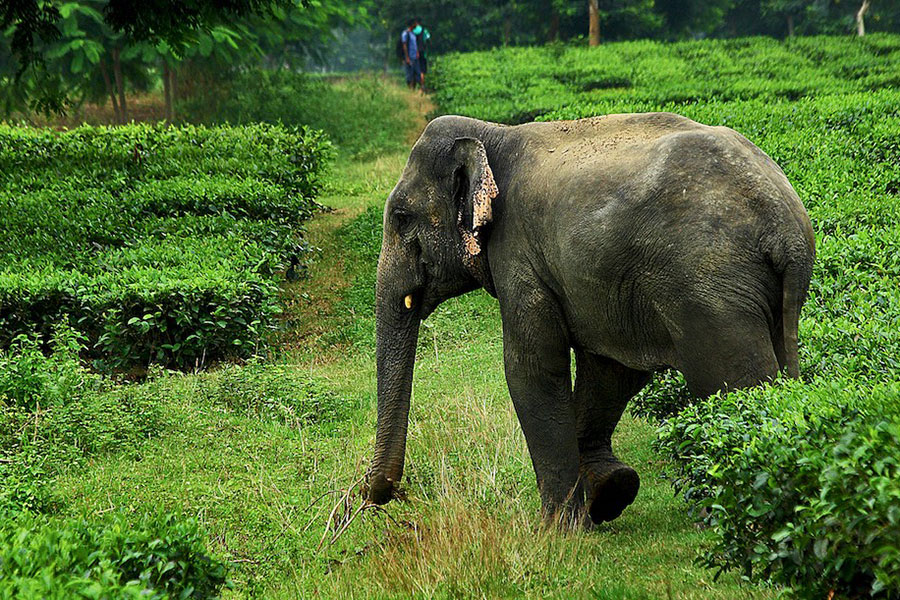Today, a number of endangered species persist in fragmented landscapes. These landscapes house pristine forests (or other habitat), alongside degraded forests, agricultural lands, plantations, settlements and other lands under different forms of human use. These lands can range from the more ‘wildlife-friendly’ coffee plantations, to open lands or human settlements that are relatively less used by wildlife.
Protection of species and habitat within reserves is without doubt a cornerstone of conservation. But when zooming out to landscapes, conservation challenges, as well as opportunities, diversify.
Animals for instance, move outside protected reserves, through forests, plantations, agricultural lands and even settlements, in search of new territories and mates, forging important links between populations and habitats. These linkages—termed connectivity—are critical for species to persist—they ensure that animals are able to adapt to changing environment and resources; they protect against negative inbreeding impacts that can lower survival; they boost immunity of species, amongst other effects.
But, as wildlife move through these lands they encounter people. Forests are getting increasingly fragmented, and these encounters between people and wildlife are similarly on the rise. More and more, there is an upswing of retaliation and protest against wildlife residing in, or moving through, people’s lands. This conflict between humans and wildlife is a huge challenge, one that is problematic for people—who lose produce, property and sometimes even their life—and for animals—who face heightened risk and mortality. Minimizing human–wildlife conflict is today a core part of many conservation programs.
In a recent paper — ‘Triage of conservation needs: the juxtaposition of conflict mitigation and connectivity considerations in heterogeneous, human-dominated landscapes’ — that was published in the international scientific journal Frontiers in Ecology and Evolution, my colleague Dr. Varun R Goswami and I argue that conservation of species in landscapes require careful thinking. We take the example of the threatened Asian elephant, a species that moves over large distances and for which connectivity is critical, while also being an animal that frequently is in conflict with people.
Focussing solely on reducing or mitigating conflict while neglecting to consider connectivity may be counter-productive for successfully saving species in the long run. This is because certain conflict-mitigation strategies may act as barriers to elephant (and other wildlife) movement, obstructing important dispersal events. In fact, conservation programs that consider connectivity provide different recommendations for human–wildlife conflict, as compared to programs that neglect this issue.
Fences around PAs is one such strategy, implemented based on its purported ability to mitigate conflict, and which, if not strategically placed, can be detrimental to wildlife in the light of their connectivity needs. Fences can be exceedingly costly, both monetarily and in terms of manpower. They may even briefly and locally reduce conflict through stopping animals from coming out of forests. But in this very effect lies their detriment to connectivity; through acting as a barrier to animal dispersal, fences can reduce species’ persistence.
From our review of human–elephant conflict mitigation studies, the most frequently recommended conflict mitigation strategy is landscape-scale planning, particularly with respect to modified cropping patterns. Yet, barrier-type strategies (interventions that can pose a barrier to animal movement) are arguably the most widely implemented to address human–elephant conflict. We strongly urge caution when putting into place barrier-type mitigation strategies, accounting for potential impacts on species’ connectivity requirements. We also point out that there is little reliable information on the actual impact—negative or positive—of conflict mitigation measures. We suggest that this to be one research focus in the future.
It is crucial to consider where conflict mitigation strategies are implemented, and their impact on landscape connectivity. Importantly, it is critical to consider the large-scale implications of locally implemented conservation interventions when species are to be conserved in large landscapes. Only with this rounded approach can we successfully achieve long-term conservation in highly diverse and dynamic landscapes.
‘Triage of conservation needs: the juxtaposition of conflict mitigation and connectivity considerations in heterogeneous, human-dominated landscapes’ authored by Dr. Goswami and Dr. Vasudev appeared in the journal Frontiers in Ecology and Evolution, and can be accessed at: https://doi.org/10.3389/fevo.2016.00144


 CI is a non-profit, non-commercial portal that aims to facilitate wildlife and nature conservation by providing reliable information and the tools needed to campaign effectively.
CI is a non-profit, non-commercial portal that aims to facilitate wildlife and nature conservation by providing reliable information and the tools needed to campaign effectively.